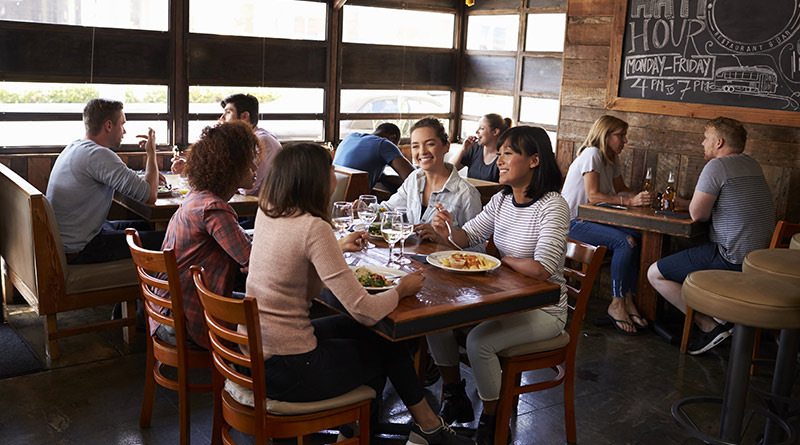Spend Across The Hospitality Sector Buoyed By Price Increases While Number Of Visits Falls

Increased prices across the hospitality sector drive year-on-year spend increases despite the number of visits taking a hit for many, as customers look to curb their spending.
This is based on the new State of Spend report from advertising platform, Cardlytics which gleans insights from the spending habits of over 20 million UK bank cards, and polling of 2,000 UK consumers.
The report shows an 8% rise in average transaction values buoyed year-on-year spend in Q1 – with total spend across the hospitality sector rising 3%, in spite of the number of trips falling 3% in the same period.
Despite this growth, high inflation threatens to further increase prices, weakening consumer purchasing power and leading to more cutbacks on non-essentials. Indeed two-thirds (66%) of consumers are planning to cut back on non-essential luxuries like eating out.
Could non-essential cutbacks impact restaurants?
Restaurants have seen a 7% uptick in spend when comparing Q1 2023 to the same period last year, driven by increases across quick service restaurants (8%) and more casual dining (4%). At the same time, average transaction values rose 7% whilst the number of trips flatlined, indicating that consumers are still visiting restaurants, but the amount spent is increasing as prices increase in line with inflation.
Q1 this year showed the toll tighter budgets are taking on the restaurant sector – as month-on-month spend fell 15% between January and February and a further 4% from February to March of this year.
Upscale restaurants are already seeing the impact of tighter budgets with year-on-year declines as spend fell 7% and visits were down 12%.
Chris Harris, Head of Restaurants at Cardlytics: “For most brands, the key will be offering introductory discounts to entice new customers and longer-term rewards to keep them coming back. With 38% of consumers saying they’d be more likely to eat out if restaurants provided more rewards and offers, there’s a clear incentive for brands to develop the right programs for their customers.”
Door-to-door delivery takes a hit
The pandemic drove a boom for door-to-door delivery meaning spend on food delivery apps in 2023 is up 104% compared to pre-pandemic levels in 2019.
However, this level of success will be hard to sustain as restaurants have to put their prices up across these apps. Between 2022 and 2023, spend has declined 2% for food delivery apps and transactions have fallen 11%.
Brits love of pubs boosts spending whilst bars struggle to keep up
Spending in pubs saw a year-on-year increase of 5% between Q1 2023 and 2022, whilst bars witnessed a fall of 16% in the same period. With 46% of consumers saying they’ve visited pubs and bars less often in the past year to save money, it’s unsurprising to see that the number of trips fell 1% for pubs and 17% for bars.
Compared to pre-pandemic levels, spend overall is up 12% despite trips only increasing 4% in that time. This is likely due to inflation as average transaction values have risen 8% in that time from £13.55 to £14.64.
Consumers willing to pay more for their coffee
Cafés have seen continued upticks in spend with a 7% rise year-on-year and 17% growth compared to pre-pandemic spend in 2019.
Whilst overall spend is on the up, the number of trips made by consumers has flatlined. This coupled with a 7% increase in ATV to £6.72 in 2023 indicates that loyal customers are still visiting cafés and coffee shops and are happy to pay slightly more as prices continue to increase.
“For brands that interact often with customers – coffee shops, delivery platforms and quick service restaurants – it’s time to consider what their customer data is telling them. What habits do their customers have? Is it a favourite coffee shop? A lunchtime treat every Friday from the same place? Takeaway orders through a particular platform? Looking at an individual’s data to create tailored offers shows that they understand and care about giving their customers the best deals for the brands they want to spend money on,” added Chris Harris.
